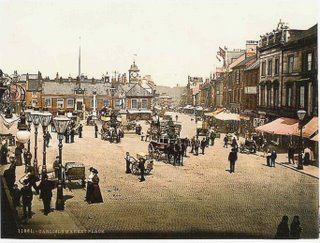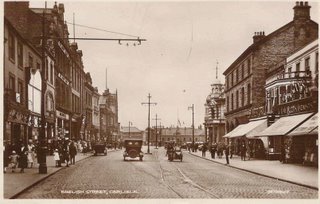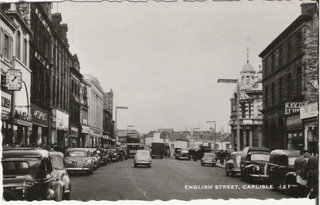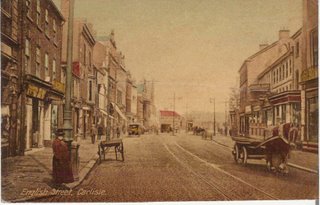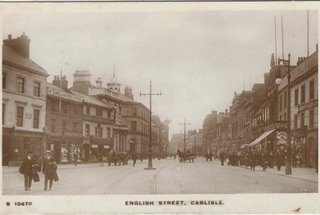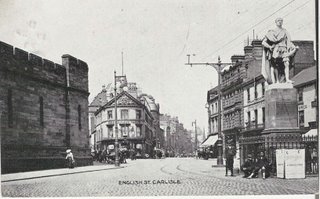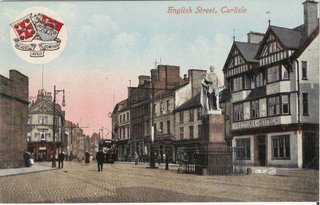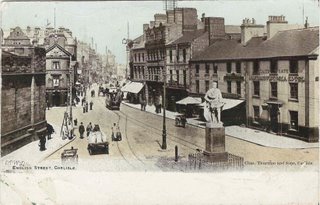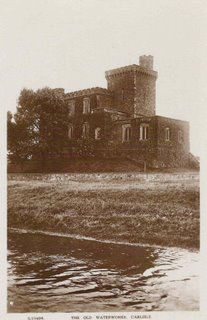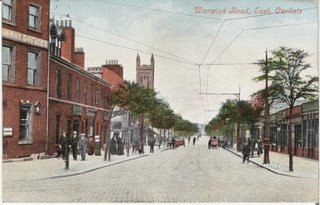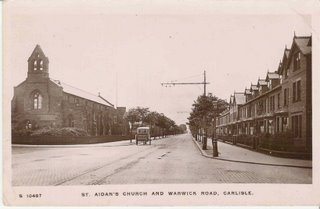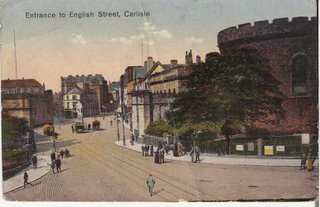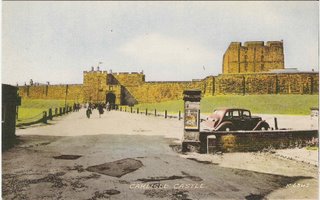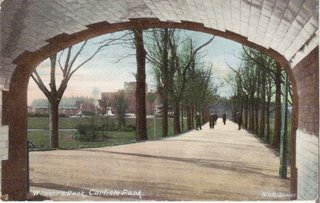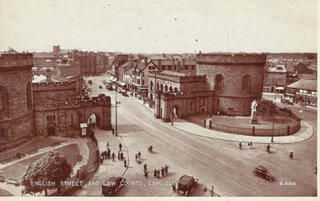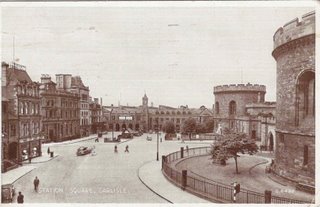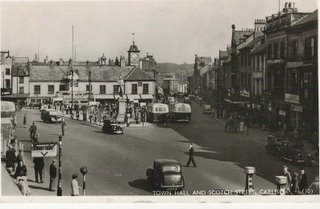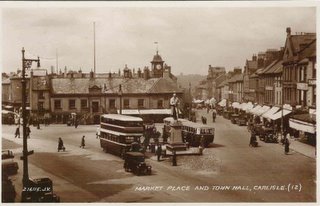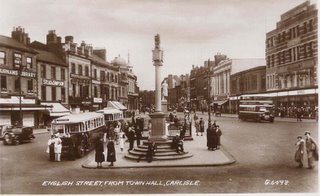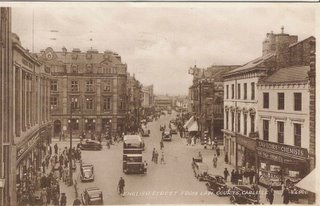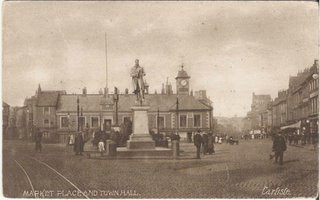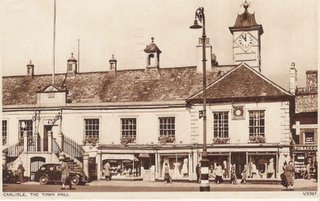Click on images to enlarge. A view along West Walls in this card, no date, possibly 1940s or earlier. The picture was taken from the steps at the end of the lane running from Abbey Street to West Walls.
A view along West Walls in this card, no date, possibly 1940s or earlier. The picture was taken from the steps at the end of the lane running from Abbey Street to West Walls. Tullie House from Abbey Street in a card posted in 1905.I wonder if the man at the gate is a curator or a security man? Tullie House was built in 1689 on the site of a former building called Whitehall, the Tullies after whom it took its name were of German origin. Before it was acquired in the 1890s for use a a museum it was lived in by members of the Dixon's mill family.
Tullie House from Abbey Street in a card posted in 1905.I wonder if the man at the gate is a curator or a security man? Tullie House was built in 1689 on the site of a former building called Whitehall, the Tullies after whom it took its name were of German origin. Before it was acquired in the 1890s for use a a museum it was lived in by members of the Dixon's mill family. 
Again in a card of 1905, the park-keeper appears to be taking a break from sweeping leaves in this autumn scene. Notice the use of the traditional 'broom'.
 From further along the Avenue, a view of the castle and the 'parkies' house. Judging from the previous picture this must have been a very nice house to live given some of the housing standards in the city at the time.
From further along the Avenue, a view of the castle and the 'parkies' house. Judging from the previous picture this must have been a very nice house to live given some of the housing standards in the city at the time. Harraby Hill House Boys Band around 1908.
Harraby Hill House Boys Band around 1908. Harraby Hill House ( see next picture ) began life as the St. Cuthberts Workhouse around 1809, when the adults were moved to the new purpose built workhouse on Fusehill St. ( now St. Martin's College ) in 1864 it continued in use for poor children.
 Harraby Hill and Bridge in a card of 1917. Harraby Hill House is the tall building on the left, the houses are on Chertsey Hill.
Harraby Hill and Bridge in a card of 1917. Harraby Hill House is the tall building on the left, the houses are on Chertsey Hill.
Cattle being brought into the market at the city would be driven down the slope to drink in the river before being driven up the other side.
The bridge over the river at this point was known in 1361 as the Pontem de Peterel ( The Petteril Bridge, the name by which we know the bridge that crosses the river near Brunton Park nowadays ). Before the building of the stone bridge in 1830 ( improved in 1941 ), there was a wooden bridge here, often in a ruinous state.
Carlisle's earliest reservoir was on top of this hill ( 1848 ), water was pumped from Stoneyholme Pumping Station ( still remembered today in The Waterworks End at Brunton Park ) and fed to the city by gravitation. Part of the retaining walls were still in place some years ago behind the Hotel ( may still be there ).
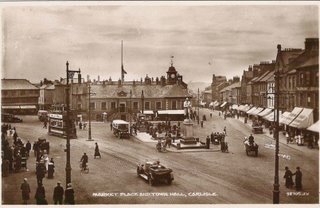
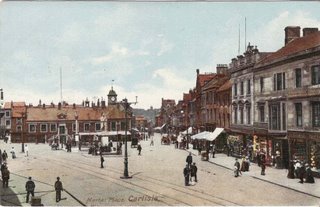 If you look down Scotch St. on this card you get a little glimpse of the buildings of Rickergate (now all demolished, will be shown on a later card).
If you look down Scotch St. on this card you get a little glimpse of the buildings of Rickergate (now all demolished, will be shown on a later card).
